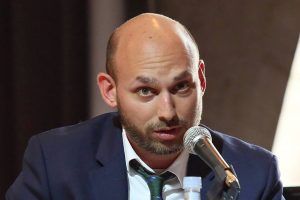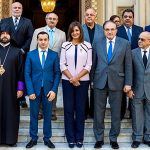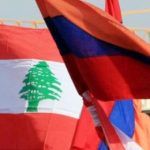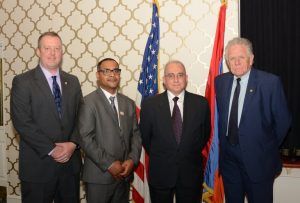2015 “Diaspora” Summer School Program: There is no detachment from the identity, but there is return

The training course for Diaspora Armenian teachers continues as part of the 2015 “Diaspora” Summer School Program of the RA Ministry of Diaspora. They expressed the desire to have an unscheduled meeting with a social psychologist, who presented the characteristics of the psychology of children, the more effective ways and methods of working with them and the importance of maintaining the balance between punishment and encouragement. The course was truly anticipated, and evidence of that were the teachers’ interest and several questions.
Emma Martirosian, who has traveled from Marseille, said she was already aware of some of the methods that the psychologist suggested and that she has applied and continues to apply them in practice. The teacher mainly starts from scratch, without any guideline. She prepares her own lesson plans, taking into consideration the children’s capabilities and expectations. “I select a method for each child since the child is also an individual with certain personality traits that are different from other children. Each child is unique, and the teacher must work individually with every child. I have worked in the Chair of Methodologies at the Armenian State Pedagogical University after Khachatur Abovyan in Yerevan and haven known all this for a long time, but I must say that in spite of that, there are always difficulties,” Mrs. Martirosian said, adding that she has come to participate in the training course to find the key to overcoming those difficulties and that she has already received helpful information.
The teacher has her own teaching style and methods. She teaches children in a way that is simple and understandable, but not simplistic. “My students go home having learned 25-30 words. They try to form short and simple sentences and know the main techniques of communication. We have 36 class hours and have to manage everything. That’s difficult in practice,” Emma Martirosian said. However, she has found an effective solution.
Mrs. Martirosian isn’t an Armenian history teacher. She started with a self-tutorial, after which she learned about children’s interests and was guided by the motto of combining the pleasant and the helpful. “Well, we don’t have a lot of class hours. For instance, we have to present the main episodes of Armenian history. The children listen with pleasure and learn the history of Haik and Bel well because the lesson provides them with the opportunity to discover their roots and become familiar with their origin. They like learning about the other Armenian myths and legends that help them understand our national traits such as heroism, courage, strength, beauty, naivety, kindness and generosity,” Mrs. Emma says.
She also assigns the children to learn by heart and say riddles that they remember well. However, she does see a problem when Armenians very often split into two groups, that is, Eastern Armenian-speaking Armenians and Western Armenian-speaking Armenians. It seems as though they compete against each other. Mrs. Martirosian often explains to them that they are Armenian, they have only one language and the two branches of the Armenian language are equal because they show the richness of the Armenian language. The teacher says it seems to her that those conversations aren’t in vain.
Throughout the past eight years, Mrs. Martirosyan has gone from teaching five children to teaching 61 children and has become completely dedicated to her job. She notes that the children aren’t becoming detached from their identity, but are returning to it. “French-speaking Armenians, who are only Armenian by last name, bring their children to learn Armenian. I have a student whose grandfather was Armenian, but the Turks forced him to assimilate. Now, his mother conscientiously brings her child to the Armenian language lessons. He’s a wonderful child, has great Armenian genes and, even though he has a Turkish last name, that doesn’t bother us in this case,” Emma Martirosian said. According to her, whereas Armenians can forget their language a little, they can never forget their religion. Armenians are more than conservative when it comes to this issue.
Mrs. Martirosian treats the training course as seriously as she does her teaching and tries not to miss anything. The teacher, who writes scripts and stages plays at her school, hopes to meet directors and screenwriters during the future courses so that she improves her skills in directing and writing scripts as well.




 Արևելահայերեն
Արևելահայերեն Արևմտահայերեն
Արևմտահայերեն Русский
Русский






